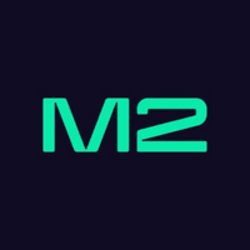
The advent of blockchain didn’t take longer to disrupt several traditional and emerging technologies. Upcoming and new technologies like Artificial Intelligence (AI) and Internet of Things (IoT) are also finding use cases with blockchain technology. At the intersection of IoT and blockchain industries, the IOTA blockchain project operates. Let us learn more about the IOTA project in the present article.
What is IOTA?
IOTA is a unique crypto project that stands out from the rest of cryptocurrencies with its Tangle blockchain system. Tangle is actually a Direct Acyclic Graph (DAG) that consists of nodes who verify and confirm transactions. IOTA does not work based on traditional consensus mechanisms such as Proof-of-Work or Proof-of-Stake.
IOTA is an open-source project that improves upon the limitations of existing blockchain projects such as mining centralization, scalability and interoperability. Its primary purpose is to offer crypto and blockchain solutions to the Internet of Things (IoT) industry. By connecting IoT devices with the blockchain, IOTA project allows IOT devices to transfer funds and make payments efficiently.
Sergey Ivancheglo, Serguei Popov, David Snsteb, and Dominik Schiener started the IOTA crypto project in 2016. Today, the project is overseen by a non-profit organization, the IOTA Foundation, that commits to develop solutions for machine-to-machine and machine-to-human communication.
Origin of IOTA
The IOTA project initially started as the Jinn project whose crowd sale was held way back in September 2014. The Jinn project had a vision of developing efficient hardware and software equipment for use in the IoT system.
After raising more than $250,000 worth of funds, the project went in vain because the Jin tokens were marketed more like security tokens. Later, the Jinn project rebranded as the IOTA in 2015 and this time IOTA tokens were marketed as security tokens.
IOTA started trading in open crypto markets from June, 2017 with a price of around $0.5. Its price increased substantially in the following months and reached an all-time high value of $5.25 by the end of 2017.
How Does IOTA Work?
As we mentioned before, IOTA is a distinct blockchain and uses a technology called Tangle. This technology allows users to validate two transactions simultaneously to complete their own IOTA transaction. Tangle is a Direct Acyclic Graph (DAG) consensus algorithm that verifies transactions.
The underlying technology of IOTA does not require any miners, validators, blocks, or transaction fees we generally see in other blockchain networks. As a result, IOTA doesn’t face any scalability or high gas fees issues. In a way, this blockchain has far better functionality over top blockchain networks like Bitcoin and Ethereum, considering the absence of scalability and gas fees issues.
The IOTA project aims to become a unique project of its own kind by becoming a go-to mode of transactions on Internet Of Things devices. Innumerable devices are connected to each other and are transmitting data every day from one place to another. While the transfer of data between devices is already present, the IOTA project enables to make payments and fund transfers as well, between the interconnected IoT devices.
Benefits and Concerns of IOTA
Being the first of its kind project, IOTA has multiple advantages over other blockchains. However, much like other blockchain technologies and projects, IOTA has some serious concerns too! Let’s discuss both the benefits and concerns of the IOTA project in this section.
The first noteworthy advantage of IOTA is the absence of transaction fees. Many blockchain networks are plagued with high transaction fees and IOTA ensures that users do not have to worry about fees when making transactions on the IOTA blockchain. By not being dependent on miners or validators, IOTA allows users to perform transactions without any fees.
Another benefit of using the IOTA blockchain network is faster transaction processing times. Being reliant on technological infrastructure like Tangle, IOTA allows users to process multiple transactions simultaneously. Additionally, the IOTA blockchain is also energy efficient. The network is designed in such a way that the network accommodates Internet of Things devices with minimal computing power.
On the other hand, there are also some concerns about the IOTA blockchain such as security vulnerabilities, and the scope of development and growth in the future. Some of the previous instances where hackers stole millions of worth of MIOTA cryptocurrency has questioned the security of the network. However, its founder David Sonstebo repaid the victims of this hack and aimed to address these types of security challenges in the upcoming upgrades.
Additionally, the IOTA project is still in its early stages of development. Similar to many other blockchain projects, there is some serious uncertainty regarding the development and growth of the IOTA project.
Conclusion
Overall, the IOTA project is one of the most prominent and noteworthy blockchain projects in the industry. With its vision to connect two emerging fields like Internet of Things (IoT) and blockchain technology, it is emerging to be a project with unique and real-time use cases. However, only time will tell whether the project will achieve mainstream adoption and growth!












































































Be the first to comment